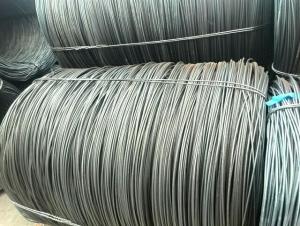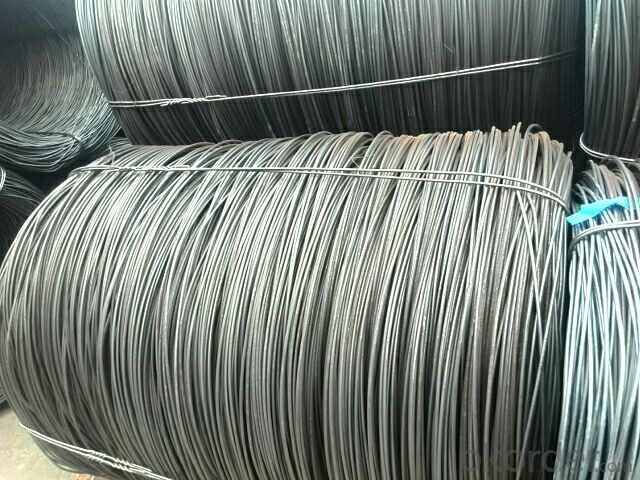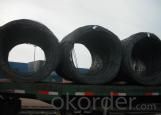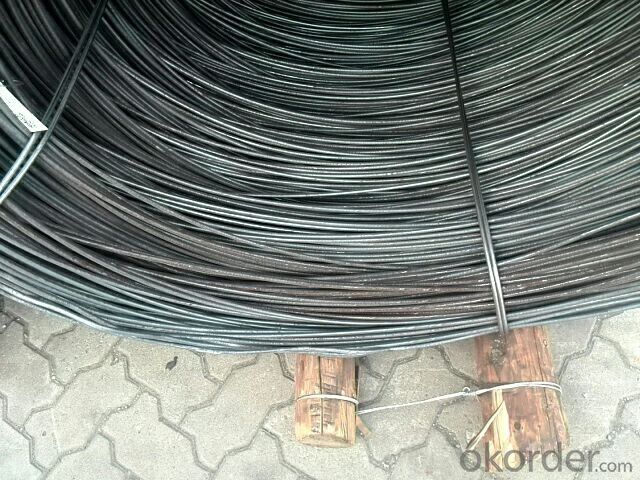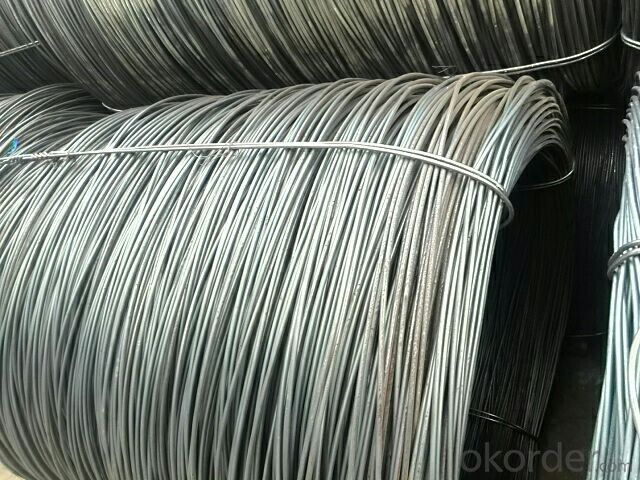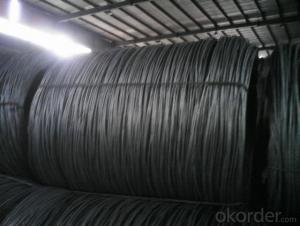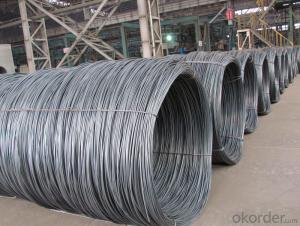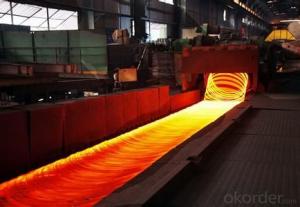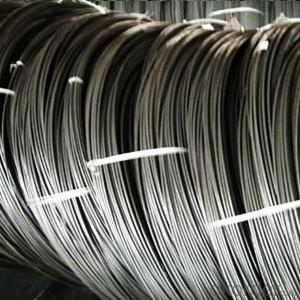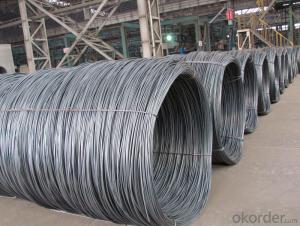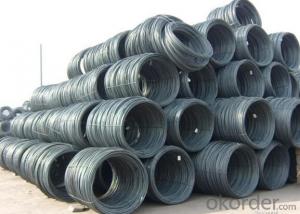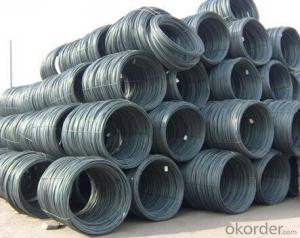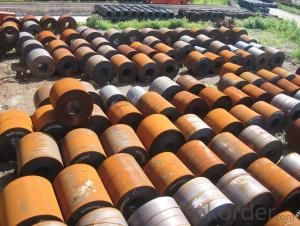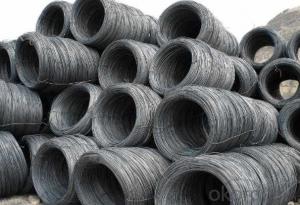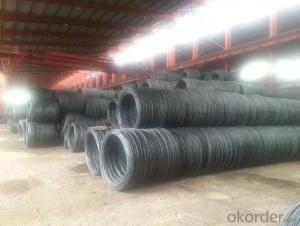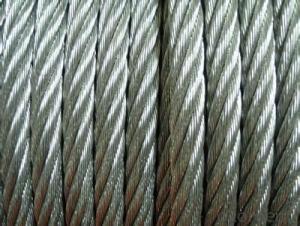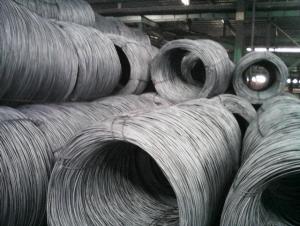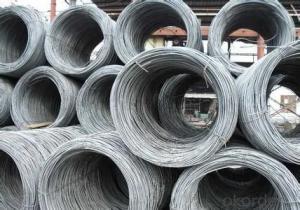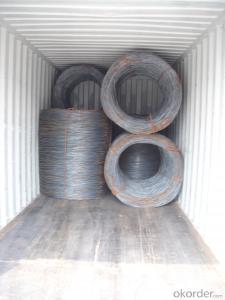Wire Rod Q195 With High Quality
- Loading Port:
- China Main Port
- Payment Terms:
- TT or LC
- Min Order Qty:
- -
- Supply Capability:
- -
OKorder Service Pledge
OKorder Financial Service
You Might Also Like
Product Description:
OKorder is offering Wire Rod Q195 with high quality
at great prices with worldwide shipping. Our supplier is a world-class manufacturer of steel, with our products utilized the world over. OKorder annually supplies products to European, North American and Asian markets. We provide quotations within 24 hours of receiving an inquiry and guarantee competitive prices.
Wire Rod Q195 with high quality are ideal for structural applications and are widely used in the construction of buildings and bridges, and the manufacturing, petrochemical, and transportation industries.
Product Advantages:
OKorder's Wire Rod Q195 with high quality durable, strong, and resist corrosion.
Main Product Features:
· Premium quality
· Prompt delivery & seaworthy packing (30 days after receiving deposit)
· Corrosion resistance
· Can be recycled and reused
· Mill test certification
· Professional Service
· Competitive pricing
Product Specifications:
Steel Grade: Q195 Standard: ASTM, GB
Diameter: 5.5mm, 6.5mm, 7mm,8mm,9mm,10mm,12mm,14mm
6.5mm can be drawing into 2mm/8.0mm can be drawing into 3mm
Type: Drawn Wire in Coil, each coil weight about 2MT
Brand Name: N-RIVER Place of Origin: Hebei, China
Chemical Composition:
Please kindly find our chemistry of our material based on Q195 as below for your information
Trademark | Rank | Chemical composition (quality score) % | |||||
C | Si | Mn | S | P | |||
| ≤ |
| ≤ | ≤ | |||
Q195 |
| 0.06-0.12 | 0.30 | 0.25 | 0.050 | 0.045 | |
Trademark | Rank | Pulling Test | |||||
Bend PointΔs/Mpa | Tensile Strength | Elongation Ratioδ5% | |||||
Thickness (Diameter) /MM | Thickness (Diameter) /MM | ||||||
≤16 | 16-40 | ≤16 | 16-40 | ||||
≥ | ≥ | ||||||
Q195 |
| 195 | 185 | 315-390 | 33 | 32 | |
Usage and Applications of Wire Rod Q195:
After hot-rolled the products shaped into coil and delivery as finished product, including round, square, rectangular, hexagonal and so on. Since most of the products are round, it is generally called wire rod. Carbon steel wire rod is widely used in construction and manufacturing. Carbon steel wire rod is mainly used for reinforcement of reinforced concrete and welded structure or reprocessed (roberts , nail, etc.) materials, especially used to produce wire drawing, welding electrode, nails, spring, electronic, precise machinery parts and so on.
FAQ:
Q1: Why buy Materials & Equipment from OKorder.com?
A1: All products offered byOKorder.com are carefully selected from China's most reliable manufacturing enterprises. Through its ISO certifications, OKorder.com adheres to the highest standards and a commitment to supply chain safety and customer satisfaction.
Q2: How do we guarantee the quality of our products?
A2: We have established an advanced quality management system which conducts strict quality tests at every step, from raw materials to the final product. At the same time, we provide extensive follow-up service assurances as required.
Q3: What makes stainless steel stainless?
A3: Stainless steel must contain at least 10.5 % chromium. It is this element that reacts with the oxygen in the air to form a complex chrome-oxide surface layer that is invisible but strong enough to prevent further oxygen from "staining" (rusting) the surface. Higher levels of chromium and the addition of other alloying elements such as nickel and molybdenum enhance this surface layer and improve the corrosion resistance of the stainless material.
Images:
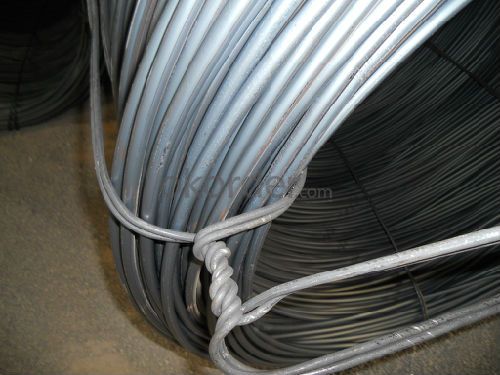
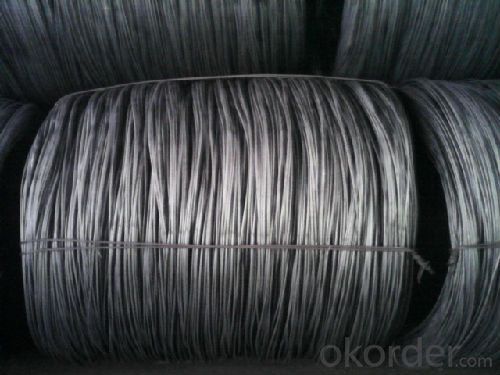
- Q: How is steel wire rod used in the manufacturing of wire for musical instruments?
- Steel wire rod is used in the manufacturing of wire for musical instruments as it serves as the primary material for creating the strings. The wire rod is first processed and drawn into thinner gauges to achieve the desired thickness and flexibility required for each specific instrument. These wires are then further treated, coated, or wound with various materials to enhance their tonal qualities and durability. Overall, steel wire rod is an essential component in producing high-quality strings that contribute to the sound and performance of musical instruments.
- Q: How is steel wire rod used in the manufacturing of wire forms for aerospace applications?
- Steel wire rod is used in the manufacturing of wire forms for aerospace applications as it provides high strength and durability, making it suitable for critical components. The wire rod is first drawn through a series of dies to obtain the desired diameter and then undergoes various shaping processes such as bending, coiling, or twisting to create intricate wire forms. These wire forms are used in various aerospace applications such as aircraft seating, control systems, and structural components due to their ability to withstand high loads and maintain their shape even under extreme conditions.
- Q: What are the safety considerations for using steel wire rod in construction?
- Some safety considerations for using steel wire rod in construction include ensuring proper handling and storage to avoid injuries from sharp edges or falling objects, following proper installation procedures to prevent structural failures, and using appropriate personal protective equipment such as gloves and safety glasses to protect against potential hazards. It is also important to regularly inspect the wire rod for signs of wear, corrosion, or other damage that could compromise its strength and stability.
- Q: How is steel wire rod used in the manufacturing of cables and wires?
- Steel wire rod is an essential raw material used in the manufacturing of cables and wires. It serves as the core material that provides strength, durability, and conductivity to the final product. The steel wire rod is first drawn into thinner wires through a process called wire drawing. These drawn wires are then used to create various types of cables and wires by either wrapping them around a central conductor or braiding them together. The high tensile strength and flexibility of steel wire rod make it ideal for transmitting electricity, telecommunications signals, and supporting structures in the cables and wires industry.
- Q: What are the common defects that can occur during the processing of steel wire rod?
- Some common defects that can occur during the processing of steel wire rod are surface cracks, internal voids or inclusions, uneven dimensions, and incorrect chemical composition.
- Q: What are the different types of steel wire rod surface inspection techniques?
- Some of the different types of steel wire rod surface inspection techniques include visual inspection, magnetic particle inspection, ultrasonic testing, eddy current testing, and dye penetrant testing.
- Q: What are the different types of steel wire rod surface defects and their detection methods?
- During the manufacturing process, various types of defects can occur on the surface of steel wire rods. These defects can have a significant impact on the quality and integrity of the wire rods, so it is crucial to identify and address them before they cause further issues. Here are some common surface defects of steel wire rods and the methods used to detect them: 1. Scale: Oxide layers can form on the surface of wire rods due to exposure to high temperatures during production. Scale can be visually detected by looking for discoloration or by performing a scratch test to see if the scale flakes off easily. 2. Cracks: Surface cracks can be caused by factors like improper cooling, excessive stress, or material defects. Visual inspection is commonly used to detect cracks, but more accurate methods like magnetic particle inspection or ultrasonic testing can also be utilized. 3. Pitting: Pitting refers to small depressions or cavities that form on the surface of wire rods due to corrosion or mechanical damage. Visual inspection is usually sufficient to identify pitting, but techniques like dye penetrant inspection or eddy current testing can be employed for a more detailed examination. 4. Surface roughness: Irregular or uneven texture on the surface of wire rods is known as surface roughness. It can be a result of improper manufacturing processes or inadequate quality control. Visual inspection or the use of a profilometer to measure roughness quantitatively can help detect surface roughness. 5. Inclusions: Non-metallic substances, such as slag, dirt, or oxide particles, can become embedded in the surface of wire rods, causing weak spots or affecting mechanical properties. Visual inspection can identify large inclusions, while microscopic examination or techniques like X-ray inspection can detect smaller or subsurface inclusions. 6. Coating defects: If a wire rod has a coating, defects like peeling, blistering, or uneven thickness can occur. Visual inspection is generally sufficient, but techniques like ultrasonic testing or electrical conductivity measurements can provide a more comprehensive assessment. It is important to note that while visual inspection is commonly used, more advanced non-destructive testing (NDT) methods can offer more accurate and reliable detection of surface defects. By employing a combination of these methods, the identification and rectification of surface defects in steel wire rods can be ensured, ultimately enhancing their quality and performance.
- Q: How does the electrical conductivity of steel wire rod vary with different wire drawing processes?
- The electrical conductivity of steel wire rod can vary with different wire drawing processes. Wire drawing is a metalworking process where a wire rod is pulled through a series of dies to reduce its diameter and increase its length. This process can affect the electrical conductivity of the steel wire rod due to several factors. Firstly, the reduction in diameter during the wire drawing process can lead to an increase in electrical conductivity. When the wire rod is drawn through the dies, its cross-sectional area decreases, resulting in a higher concentration of conductive material in a smaller space. This increased concentration of conductive material can enhance the electrical conductivity of the steel wire rod. Secondly, the wire drawing process can influence the microstructure of the steel wire rod, which in turn affects its electrical conductivity. The deformation and strain during wire drawing can cause changes in the crystal structure and grain size of the steel. These changes can have a significant impact on the electrical conductivity of the wire rod. For example, if the wire drawing process leads to grain refinement, it can enhance the electrical conductivity by reducing the scattering of electrons. Additionally, the wire drawing process can also introduce impurities or defects into the steel wire rod, which can affect its electrical conductivity. These impurities or defects can act as scattering centers for electrons, reducing the overall electrical conductivity of the wire rod. Furthermore, the choice of lubricants and cooling methods during the wire drawing process can influence the electrical conductivity of the steel wire rod. Lubricants help reduce friction and heat during the drawing process, which can prevent the formation of oxides or other surface contaminants that could hinder electrical conductivity. Effective cooling methods can also help maintain the desired microstructure and prevent the formation of detrimental phases that could impact electrical conductivity. In conclusion, the electrical conductivity of steel wire rod can vary with different wire drawing processes. Factors such as the reduction in diameter, changes in microstructure, introduction of impurities or defects, and choice of lubricants and cooling methods can all influence the electrical conductivity of the steel wire rod. Careful consideration of these factors during the wire drawing process can help achieve the desired electrical conductivity for specific applications.
- Q: How are steel wire rods used in the production of welding electrodes?
- Steel wire rods are used in the production of welding electrodes as they serve as the core material for the electrode. The steel wire rods are manufactured with specific chemical composition and mechanical properties to ensure strength and durability. They are then further processed to form the electrode's outer coating, which provides additional properties such as arc stability, slag removal, and alloying elements. Overall, steel wire rods are essential for the production of welding electrodes as they form the backbone of the electrode, enabling efficient and effective welding operations.
- Q: What are the common production processes for darmstadtium-coated steel wire rod?
- The common production processes for darmstadtium-coated steel wire rod include cleaning and surface preparation, coating application, curing or drying, and quality control inspections.
Send your message to us
Wire Rod Q195 With High Quality
- Loading Port:
- China Main Port
- Payment Terms:
- TT or LC
- Min Order Qty:
- -
- Supply Capability:
- -
OKorder Service Pledge
OKorder Financial Service
Similar products
Hot products
Hot Searches
Related keywords
